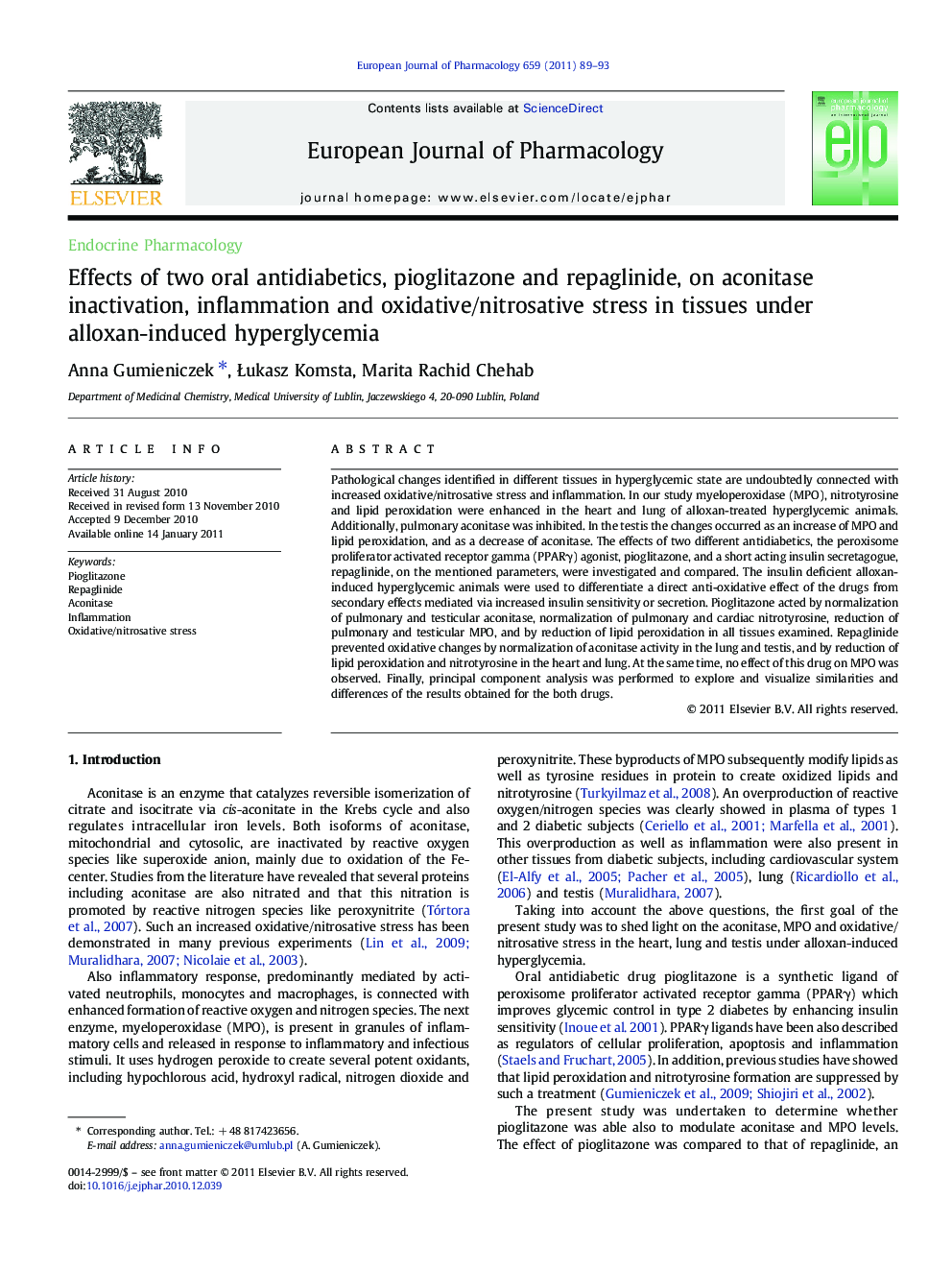| Article ID | Journal | Published Year | Pages | File Type |
|---|---|---|---|---|
| 2532920 | European Journal of Pharmacology | 2011 | 5 Pages |
Pathological changes identified in different tissues in hyperglycemic state are undoubtedly connected with increased oxidative/nitrosative stress and inflammation. In our study myeloperoxidase (MPO), nitrotyrosine and lipid peroxidation were enhanced in the heart and lung of alloxan-treated hyperglycemic animals. Additionally, pulmonary aconitase was inhibited. In the testis the changes occurred as an increase of MPO and lipid peroxidation, and as a decrease of aconitase. The effects of two different antidiabetics, the peroxisome proliferator activated receptor gamma (PPARγ) agonist, pioglitazone, and a short acting insulin secretagogue, repaglinide, on the mentioned parameters, were investigated and compared. The insulin deficient alloxan-induced hyperglycemic animals were used to differentiate a direct anti-oxidative effect of the drugs from secondary effects mediated via increased insulin sensitivity or secretion. Pioglitazone acted by normalization of pulmonary and testicular aconitase, normalization of pulmonary and cardiac nitrotyrosine, reduction of pulmonary and testicular MPO, and by reduction of lipid peroxidation in all tissues examined. Repaglinide prevented oxidative changes by normalization of aconitase activity in the lung and testis, and by reduction of lipid peroxidation and nitrotyrosine in the heart and lung. At the same time, no effect of this drug on MPO was observed. Finally, principal component analysis was performed to explore and visualize similarities and differences of the results obtained for the both drugs.
